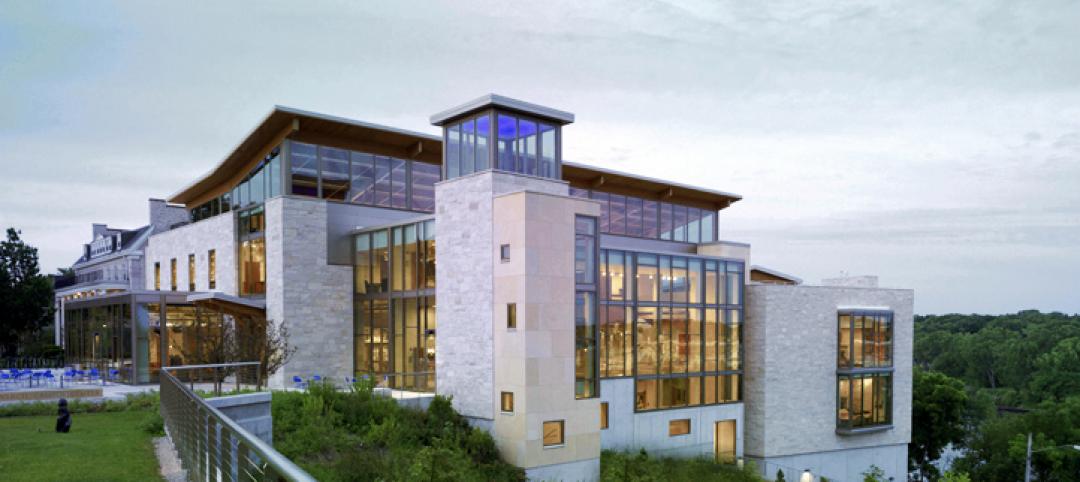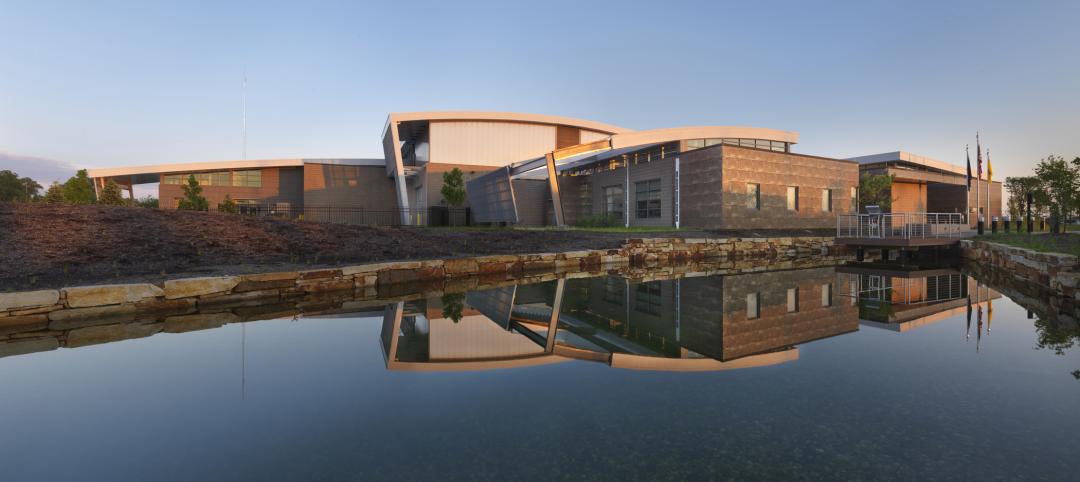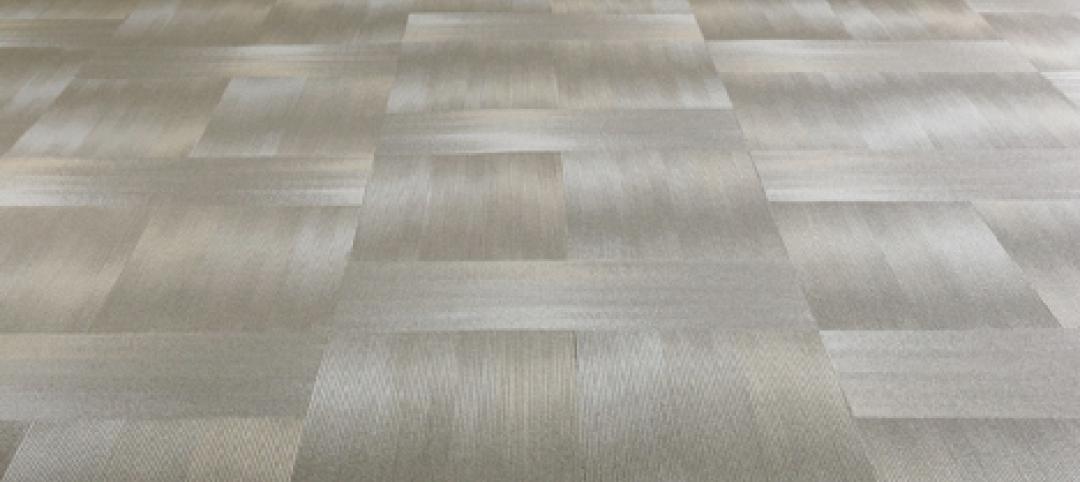Conventional windows have long been considered the weak link in the building envelope. According to the U.S. Department of Energy’s Building Technologies Program Multi-Year Program Plan 2011-2015, approximately 4.4 quadrillion Btu of energy in the U.S. is lost through windows in the form of heating and air-conditioning loads.
The DOE plan suggests that regardless of orientation or climate, window systems have the potential to outperform the best-insulated wall or roof in terms of annual energy performance, peak demand reduction, and cost.
UNIVERSITY FINDS A SOLUTION TO INEFFICIENT WINDOWS
The University of Minnesota’s Folwell Hall, a fixture on the National Register of Historic Places, recently underwent three years of extensive renovation.
Before the renovation, students, staff, and faculty who met in Folwell Hall were at the mercy of wildly fluctuating temperatures caused by outdated, inefficient windows, and an antiquated HVAC system.
The Building Team of Miller Dunwiddie Architects and construction manager McGough Construction, both of Minneapolis, set out to remedy this problem by replacing 400 existing windows with energy-efficient units. In order to meet state sustainability guidelines, window distributor National Window Associates Inc., Rogers, Minn., recommended Kolbe’s Ultra Series Sterling double-hung units with standard LoE2-270 double-pane insulating glass.
“Two of the main goals for Folwell Hall were to protect its historic significance and improve its energy efficiency,” says Denita Lemmon, AIA, project manager with Miller Dunwiddie. “The window system met both the aesthetic and performance specifications.”
In the 1980s, Folwell Hall’s century-old wood windows had been replaced with a basic aluminum system, which hid some of the historic architectural details. The replacement window system integrated aluminum-clad windows with custom aluminum panning to replicate the original architectural vision.
“To retain as much of the historical nature of the window openings, the interior trim was left in place,” says Tim Mahanna, project superintendent with McGough Construction.
The renovation of Folwell Hall was completed in August 2011. In addition to the new windows, the building’s HVAC system was updated to create an energy-efficient, temperature-controlled environment year-round. According to University of Minnesota officials, the indoor environment in Folwell Hall has been dramatically improved in terms of the HVAC, acoustics, and comfort.
COMMERCIAL RETROFIT KEEPS NOISE, ENERGY LOSS LOW
The 400 Market Street building in Philadelphia is an example of one of the countless buildings in the U.S. that are 30-60 years old where reglazing for aesthetic, environmental, or practical reasons is called for.
Constructed in 1972, the 12-story building is owned and managed by local property firm Kaiserman Co. As energy costs rose, along with tenant complaints regarding street noise, Kaiserman opted to install the Renovate by Berkowitz window retrofit system.
Glass fabricator J.E. Berkowitz manufactures an on-site window retrofit system that converts existing single-pane windows into energy-saving, triple-glazed insulating glass units. The retrofit system costs about 50% less than ripping out and replacing old windows.
Carolyn Pfeiffer, property manager of 400 Market Street, says the investment in the retrofit system is already paying dividends beyond cost and energy savings.
“Even without the energy savings, we’ve received positive feedback from our tenants, who are pleased with how much quieter and more comfortable the building is,” says Pfeiffer. The installation team worked with the tenants to minimize disruption to their workplace. “This not only made the tenants happy, but saved time and the cost of relocating them as well,” she says.
The retrofit took about 50 working days. In comparison, a traditional rip-out/replace project can take between 100-150 days for a similar 12-story structure.
AESTHETICS, THERMAL PERFORMANCE APPEAL TO MIDDLE SCHOOL
Beaty-Warren Middle School in Warren, Pa., recently completed an extensive renovation to update the 80-year-old facility. In addition to numerous structural and aesthetic updates, more than 300 high-performance, energy-efficient windows were installed.
Contractor Architectural Windows Concepts, Export, Pa., was given a six-month schedule to remove the existing windows and replace them with windows manufactured by Wausau Windows and Wall Systems.
Originally designed in 1930, the school experienced three building expansions to accommodate a growing student population. During each reconstruction phase, the windows were replaced on an as-needed basis, resulting is dissimilar styles and performance.
In 2010, the Warren County School District voted to replace the school’s windows and selected Hallgren, Restifo, Loop & Coughlin Architects, Erie, Pa., to design the reconstruction project.
“Our goal was to bring back the original intent and character of the building’s design,” says Chris Coughlin, lead architect. “We knew the windows would be an important piece to anchor the original design aesthetic and tie together the building’s many additions.”
Among the difficulties was creating profiles for more than 65 different window sizes and replicating the original shapes and colors of the window frames.
Mimicking the look of the school’s original windows, Wausau’s INvent Series units were fabricated for Beaty-Warren with a beveled face, muntin grids, and custom panning. Offset glass panes replicate the historic double-hung sash while offering easy operation, weatherability, and performance. The window’s triple-glazed, high thermal performance contributes to both the environmental and financial goals of the school. Following installation, interior temperatures at the school increased an average of 4-5 degrees Fahrenheit in the classrooms during the winter heating season. In the warmer months, the windows can be opened for natural ventilation.
To manage daylight, the windows were installed with one-inch, between-glass blinds. This allows staff to control glare, which may be evident on computer screens.
“Our office is very pleased with the design aesthetic,” says Coughlin. “The windows reflect the aesthetics that would be expected on a school from this particular era, yet add the performance we expect today.” +
Related Stories
| Sep 7, 2011
KSS Architects wins AIA NJ design award
The project was one of three to win the award in the category of Architectural/Non-Residential.
| Sep 7, 2011
Administration, Maintenance and Operations Facility in South Bend achieves LEED Platinum
The facility achieved 52 LEED points, including those for site selection, energy, materials and resources and innovation.
| Sep 6, 2011
Construction on Beijing's tallest building starts next week
The 108 floor mixed-use skyscraper consists of offices, apartments, hotels and shopping malls on the lower floors.
| Aug 31, 2011
Sebastopol, Cailf., invites designers to submit ideas for renewing city center
The goal of The Core Project is to explore how the physical presence of Sebastopol can become a more economically thriving and aesthetically vibrant place, reflecting the naturally beauty of the region and the character of the community.
| Aug 31, 2011
Wythe Confectionary renovation in Brooklyn completed
Renovation retains architectural heritage while reflecting a modern urban lifestyle.
| Aug 24, 2011
Deadline Extended: 2012 "Best AEC Firms to Work For” Awards
We’re looking for firms that create truly positive workplaces for their AEC professionals and support staff. In other words, this awards program will recognize those AEC firms that nurture and develop their most valuable asset—their people.
| Aug 23, 2011
Acoustical design education model
Pass this exam and earn 1.0 AIA/CES Discovery learning units. You must go to www.BDCnetwork.com/EnhancedAcousticalDesign to take this exam.
| Aug 19, 2011
Thought Leader: Boyd R. Zoccola, chair and chief elected officer of BOMA International
Boyd R. Zoccola is Chair and Chief Elected Officer of BOMA International. A BOMA member since 1994, he has served on the Executive, Finance, Investment, and Medical/Healthcare Facilities Committees. An Indiana Real Estate Principal Broker and a board member of the Real Estate Round Table, he is Executive Vice President of Hokanson Companies, Inc., of Indianapolis, and has been involved in the development of $600 million worth of real estate. On a volunteer basis, Zoccola was president of Horizon House and a board member of Girls, Inc. He holds a BA in biology from Indiana University.
| Aug 19, 2011
How and why AEC professionals choose flooring systems
Design and construction professionals who completed our flooring survey had strong opinions about their preferred flooring type.
















